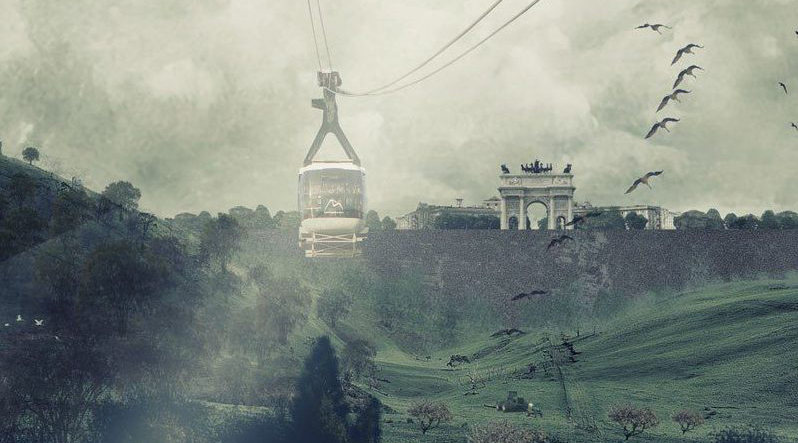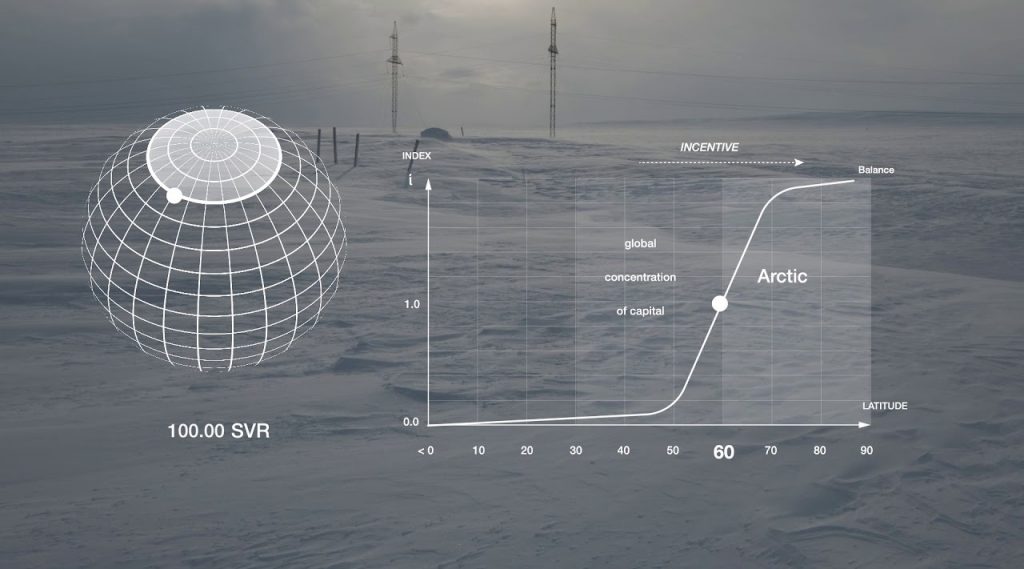
In an attempt to fix a troubled world, Ursula K. Le Guin’s Dr. Haber, an oneirologist, or dream scientist, directs, morphs, and shapes alternative realities through the “effective” dreams of his patient George Orr. By means of a machine he designed—the Augmentor—and verbal suggestions, Haber orders Orr to dream away grave global problems, from excessive rain to racism, overpopulation, and world wars. The results are dreadful: a warming planet, a uniform light gray skin color that eliminates the possibility for interracial persons to exist, a plague that extinguishes close to 85 percent of the total global population, peace between nations at the prospect of an alien invasion of Earth, and an intergalactic war that reactivates natural disasters, to name a few.1 Across the many realities unfolding throughout the account, the reader is consistently reminded that environmental, social, political, scientific, and economic issues are always tightly enmeshed.
Precarity, menace, and irregularity are defining features of contemporary life. It has become almost impossible to escape the knell scientists have tolled for the planet. Climate instability is no longer confined to abstract numbers and formulas only; it is made increasingly visible by intensifying disasters—hurricanes, earthquakes, fires, and floods—that are striking closer to one’s home. By shorter winters, and more frequent heat waves. By disrupted agricultural production, dislocated seasonal diets, and hijacked migrations. More people than ever before in history are being forcibly displaced, revealing dangerous and on-the-rise xenophobic behaviors and fostering right-wing populism around the world. Heads of states struggle to keep their realms at bay. Enough events continue to occur daily and at an accelerated pace to sound a calamitous alarm for the future of the earth. However, the biosphere is not apocalyptically blowing over; instead, it is witnessing violent transformations of its properties—geological and otherwise cultural—that might render it incompatible with life as it was previously known. These transformations all inform the unstable history of human civilization’s relationship with nature; they also inform venues for collective resistance and capacities for making reparations.
While the current President of the United States has explicitly abandoned the international community of nations in what concerns ecological degradation, it is important now more than ever to recognize the new climate regime as the chief geopolitical event of contemporary life. It is important to make visible the thread of violence that connects matters of the environment to politics, social justice, and economy, and to materialize a view of a common goal among inhabitants of the globe, without losing the commitment to complexity and specificity. Much like Ursula K. Le Guin, we see the potential of objects—of all types, from skyscrapers to video games; at all scales, from the microbiome to the cosmos; and in all dimensions, from the physical to the digital and beyond—in helping to understand and define reality; and, like Le Guin, we strongly believe in creativity’s transformative powers. Designers and artists are able to formulate, through artifacts and concepts, urgent political questions that cannot rely solely on regular processes to enter public discourse. In regards to the environment and all associated concerns, in particular, state policy is driven to make reformations by the priorities that researchers, designers, activists, scientists, architects, and citizens set forth.
The undeniable current state of emergency is nevertheless met with collective indifference at best, and orchestrated denial at worst. We believe that design has inherent restorative abilities, and can cater to this displacement of action. Design can provide appropriate mental, aesthetic, and emotional tools required to process and handle key issues of the present day. Most importantly, design has the much-needed capacity to help decipher complex circumstances and take steps toward constructive action. Indeed, design has the ability to creatively expand on the world and produce new worlds that were previously unimaginable, to concoct new stories, and therefore to generate new visions of contemporary situations. In recognizing the need to trace symbiotic relationships, it presents a meaningful opportunity to reframe humans’ rapport with nature, and articulate different kinds of futurism.
With Broken Nature, we will not try to stipulate yet another definition of the elusive concept of nature, or speculate on future and futures; instead, we will bring to light—online, in the galleries, and elsewhere—a moment of self-reflection within the design discipline at a crucial point in the history of the human species. In order to celebrate restorative design, we must first recognize that designers have at times adopted and promoted a widespread attitude of assuaging correctness. The uses and abuses of buzzwords like “green,” “sustainable,” “organic,” and “aware,” to name a few, have been culpable in producing an illusion of participation in reparative measures toward the planet. Yet goodwill and provisional approaches—much like Dr. Haber’s—are no longer effective. It is time for designers to start building comprehensive reparations into objects and concepts.
Similarly to scientists, geographers, and others who—in order to better understand the new cosmology that makes up the universe—documented and classified constituents of the New World into visual and textual representations, we are interested in the potential to build a taxonomical language to navigate the new climate characterized by ecological degradation and increasingly unstable social orders. This online publication—of texts, images, videos, and podcasts, among other contributions by authors from diverse fields—will help us further hone our aspirations. It provides us, the curatorial team, with the opportunity to be truly transparent with our audience in sharing our thoughts and processes involved in organizing the XXII Triennale. These will develop and evolve throughout this year; our ambitions are to present this unfolding in real time and extend the conversation to the public, instead of offering a packaged version of what we believe the project should be. The platform will also gather a living index of relevant references, from news articles to academic papers, projects, new and longstanding theories, people, journals, and books.
Broken Nature is ultimately an archeological endeavor; it serves as an interdisciplinary multimedia documentation that unearths design’s potential to offer alternative insight into important global matters, to diffuse a stubborn and exclusively future-centric vision of humankind’s relationship with the environment, and instead imagine “still possible pasts, presents, and futures.”2
1 Partial description of the plot in The Lathe of Heaven written by Ursula K. Le Guin, and published for the first time in 1971 by Avon Books, New York.
2 Donna J. Haraway, Staying with the Trouble: Making Kin in the Chthulucene (Durham: Duke University Press 2016), p.50.



